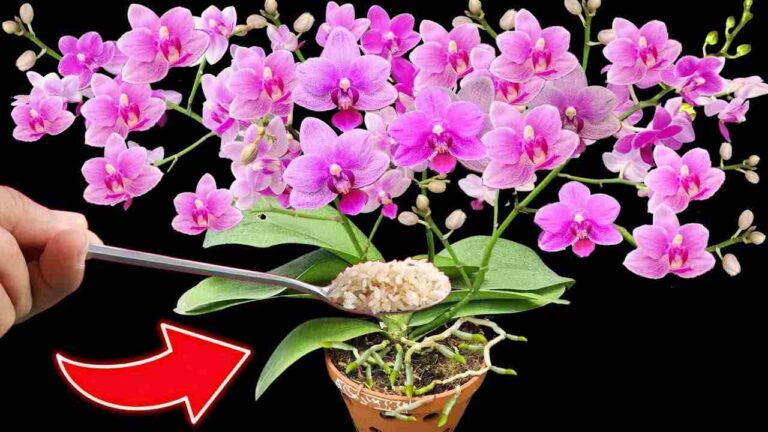Water all plants with this water – even the driest flowers will bloom
Water all plants with this specific water, even the dried flowers will thank you during the summer.
Watering plants and flowers is an essential part of growing plants during the summer. Choosing the right time to water , distributing water evenly, using cool water, and monitoring your plants regularly are important steps to keeping them healthy and strong. There’s a tip: water all the plants with this specific ingredient . Let’s find out together what it is?
How do you water plants in the summer?
Summer is a wonderful season to see nature in full bloom. Plants and flowers take advantage of the sun’s rays and warm weather, but at the same time, summer can be difficult for them. High temperatures and dry air often cause many plants to suffer from dehydration. If you want to keep your plants and flowers green and lush throughout the summer, it’s important to be careful with your watering.
The amount of water plants and flowers need varies depending on the type, size and age of the plants. Some plants need a lot of water, while others can survive on a minimal amount for a short period of time. In general, most plants and flowers require at least 2 to 3 inches of water per week in the summer.
The best time to water plants and flowers is in the early morning hours or in the evening , after sunset. Avoid watering during the hottest parts of the day, as the water can evaporate quickly, not giving the plants time to absorb the nutrients.
There are some important methods to consider when watering plants and flowers in summer:
- Water the plants evenly. Water should be evenly distributed throughout the plant so the soil is evenly moist. This helps the plant grow evenly and strongly;
- Use cold water. Hot or warm water can damage plant roots and flowers. Using cool water can help keep plants healthy and strong throughout the summer;
- Avoid accumulation of water. Accumulated water can stimulate the growth of fungi and bacteria, damage plant roots and flowers, and reduce their ability to absorb nutrients. Use an adequate amount of water and make sure the soil is permeable to avoid waterlogging problems.
Water all plants with this natural ingredient
Carrot juice can be a valuable source of nutrients for plants and can be used as a natural nutrient to improve the health of the soil and the plants themselves. One of the main benefits of carrot juice is the concentration of nutritional elements, including potassium, calcium and phosphorus, useful for the growth and development of plants. These elements are essential for root formation, maintaining leaf health and improving fruit production.
It can also act as a biostimulant for plants, promoting plant growth and maturation, as well as soil health. The presence of organic substances, such as glucose, fructose, malic acid and citric acid, promotes the absorption of nutrients by plants. In this way, plants benefit from greater availability of nutrients for their growth, improving their productivity and resistance to diseases.
Additionally, using carrot juice can help mitigate the negative effects of using environmentally harmful chemicals such as pesticides and synthetic fertilizers. In fact, the use of natural products such as carrot juice can help reduce the amount of chemicals used in agriculture , thus promoting a more sustainable and environmentally friendly agricultural system.






